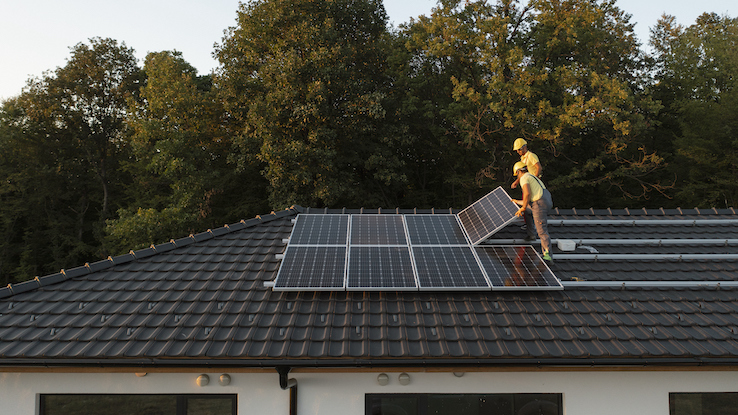Home Solar Panels: Solar Leasing Guide

Did you know that installing solar panels at your home could be less expensive than you think it is? If you’re looking to maximize the savings from your home solar panels, you may want to consider leasing them instead of purchasing them outright. By doing this, you can enjoy many of the benefits associated with owning your solar panels, such as lower energy bills and a reduction in your carbon footprint, but without needing to pay the large upfront costs typically associated with purchasing a solar panel system. Learn more about solar panel leasing to find out if it might be a viable option for you.
What Are the Benefits of Solar Leasing?
If you’re thinking of going solar, leasing might be the way to go. Instead of paying for the cost of the solar power system outright, you lease it from a company and pay a smaller fee to use it while it’s installed at your home. It’s a cost-effective way to get solar panels put in quickly and affordably, and there are many different leasing companies to choose from. Just be sure to research the options carefully to make sure you’re getting the best deal. Since leasing doesn’t always require a down payment, it’s an affordable option for those who don’t have much money saved up.
Which Types of Solar Panels Are Common?
When it comes to solar leasing, there’s a variety of different types of solar panels that you can choose from. Depending on your specific needs, one type of solar panel may be better than another.
When choosing a solar panel for solar leasing, it is important to consider your needs. You’ll want to think about its material and how easy it is to install. The material can influence the frequency of maintenance you’ll need performed on the system, and it can also impact the amount of money you pay to lease the panels.
There are three main types of solar panels to consider: Thin Film Solar Panels, Monocrystalline Solar Panels, and Polycrystalline Solar Panels.
Thin Film Solar Panels are a popular type of solar panel, and they are usually made out of silicon. They are affordable and easy to install, but they have some limitations. Specifically, they don’t last as long as other types of solar panels, and they tend to be less efficient. They may need more frequent maintenance.
Monocrystalline Solar Panels are made out of a single type of crystal, and they are generally more efficient than Thin Film Solar Panels. They also last longer than Thin Film Solar Panels, but they can be more expensive to maintain and install.
Polycrystalline Solar Panels are made out of different types of crystals, and they are generally more efficient than Monocrystalline Solar Panels. They also cost more to purchase and install, but they typically have longer lifespans than Monocrystalline Solar Panels.
What Are the Downsides of Solar Leasing?
There are some potential downsides to solar leasing. First and foremost, solar leasing can still be expensive, even if it’s more affordable than paying to install a system that you own outright. If you end up keeping the system in place for a long time and paying fees on it, you eventually may end up paying more for its use than you would if you had just bought the system outright. Furthermore, solar leasing can be complicated, and you might not want to have to maintain an ongoing relationship with the solar company. Additionally, good credit is often a requirement for solar leasing, so it may not be suitable for everyone.
If you’re interested in maximizing your savings from your home solar panels, solar leasing could be a good option for you. By taking advantage of these benefits, you can enjoy many of the benefits associated with owning your solar panels. But, remember that it’s important to think carefully about the benefits and drawbacks before making a commitment to a lease or purchase.
This text was generated using a large language model, and select text has been reviewed and moderated for purposes such as readability.





